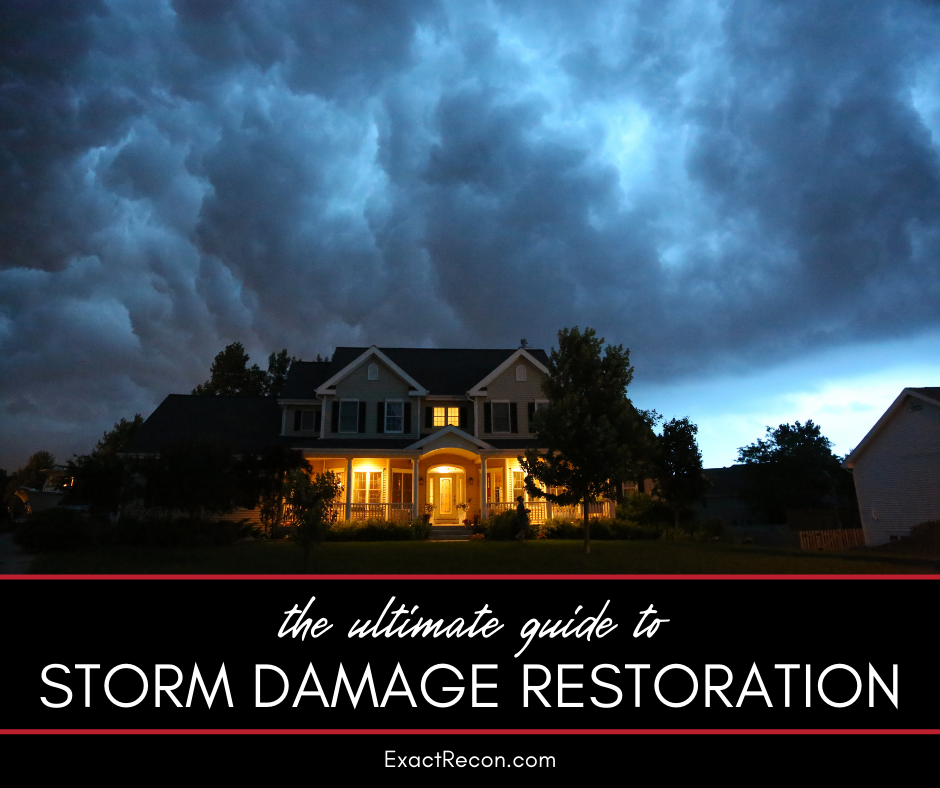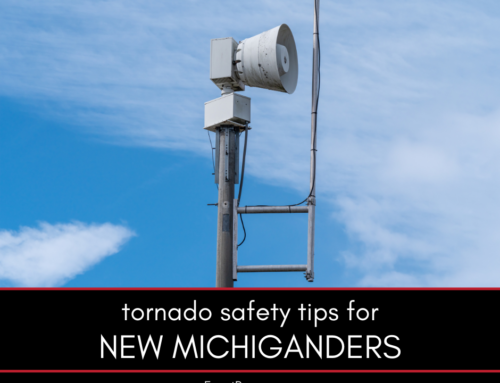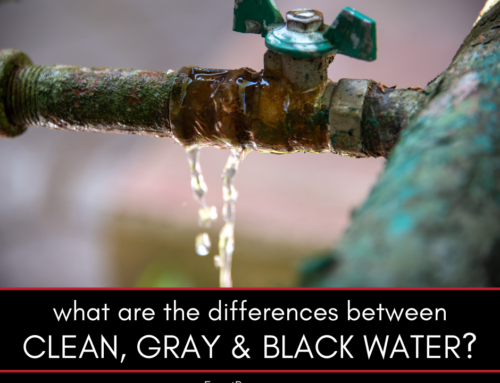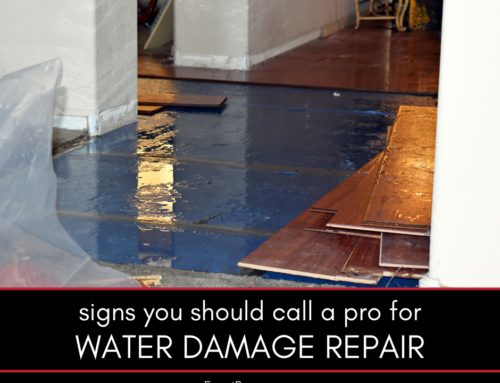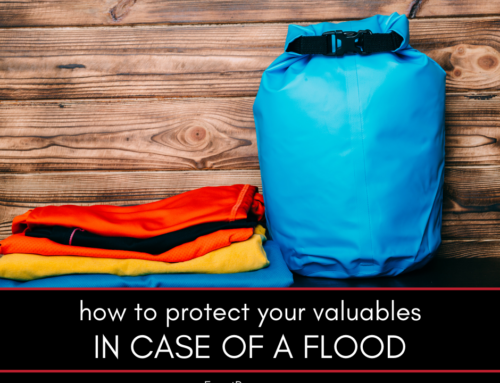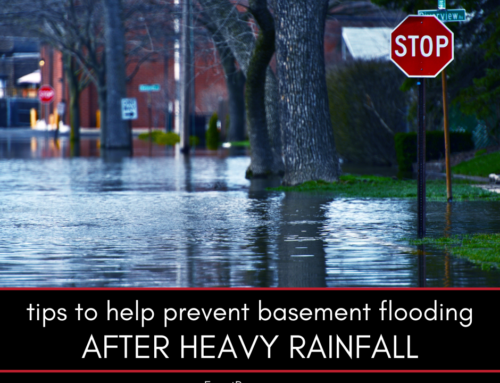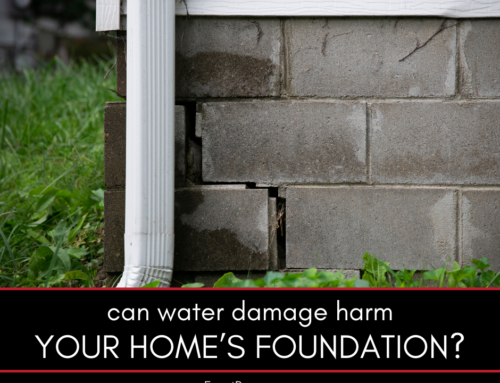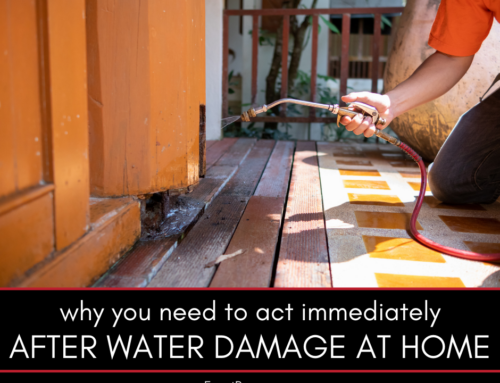Storms can wreak havoc on your home, causing extensive damage that requires immediate attention. Knowing how to handle storm damage is crucial for protecting your property and ensuring your family’s safety.
The Ultimate Guide to Storm Damage Restoration
Storm damage can affect various parts of your home, from the roof to the foundation. This guide explains the following:
- Assessing storm damage
- Immediate steps to take after a storm
- Common types of storm damage and how to address them
- Working with professionals for storm damage restoration
- Preventative measures to minimize future storm damage
Here’s a closer look at each.
Assessing Storm Damage
After a storm, the first step is to assess the damage to your property. Walk around your home and look for visible signs of damage, such as missing shingles, broken windows, and downed trees. Check the roof for loose or damaged shingles, and inspect the gutters for clogs or damage. Examine the exterior walls for cracks or holes, and check the foundation for any signs of shifting or cracking. Inside your home, look for water stains on ceilings and walls, as well as any signs of leaks around windows and doors. Document all the damage with photos and notes, as this information will be crucial for insurance claims and repairs.
Related: Expert tips for dealing with water and fire damage, mold and more
Immediate Steps to Take After a Storm
Safety should be your top priority after a storm. Ensure that all family members and pets are safe and accounted for. If there are downed power lines, avoid them and contact your utility company immediately. Turn off the electricity if you suspect any electrical damage, and avoid using appliances until they have been inspected. Secure your home by boarding up broken windows and doors, and cover any holes in the roof with tarps to prevent further water damage. Remove any debris that could pose a safety hazard, but be cautious of sharp objects and unstable structures.
Common Types of Storm Damage and How to Address Them
Storms can cause various types of damage, each requiring a different approach for repair.
Roof Damage: High winds, hail, and falling debris can damage your roof, leading to leaks and structural issues. Replace missing or damaged shingles and repair any holes or cracks. If the damage is extensive, you may need to replace the entire roof.
Water Damage: Heavy rains and flooding can lead to water damage inside your home. Remove standing water as quickly as possible, and use fans and dehumidifiers to dry out affected areas. Check for signs of mold and address any issues immediately.
Wind Damage: Strong winds can cause trees and branches to fall, damaging your home and surrounding property. Remove fallen trees and debris, and repair any damage to the exterior of your home.
Hail Damage: Hail can dent siding, damage roofing materials, and break windows. Inspect your home for hail damage and make necessary repairs to prevent further issues.
Foundation Damage: Severe storms can cause soil erosion and water damage around your home’s foundation. Look for cracks and shifting, and consult a professional if you suspect structural damage.
Related: How to salvage your belongings after major home damage
Working With Professionals for Storm Damage Restoration
Hiring professionals for storm damage restoration can ensure that the repairs are done correctly and efficiently. Professional restoration companies have the expertise and equipment to handle all types of storm damage, from water extraction to structural repairs. They can also help you navigate the insurance claims process and provide documentation of the damage and repairs. When choosing a restoration company, look for one with experience in storm damage, proper licensing, and positive customer reviews. It’s also important to get a detailed estimate and timeline for the repairs.
Related: Creating a disaster preparedness kit for your home
Preventative Measures to Minimize Future Storm Damage
Taking preventative measures can help minimize the damage from future storms. Regularly inspect and maintain your roof, gutters, and downspouts to ensure they are in good condition. Trim trees and branches that are close to your home to prevent them from falling during a storm. Install storm shutters or impact-resistant windows to protect against high winds and flying debris. Ensure that your yard has proper drainage to prevent water from pooling around your foundation. Consider investing in a backup generator to maintain power during outages, and have an emergency plan in place for your family.
FAQ About Storm Damage Restoration
Check out these commonly asked questions about storm damage restoration. If you don’t see your question here, please call our office and we’ll find you the answers you need.
How Soon Should I Start Storm Damage Repairs?
You should start storm damage repairs as soon as it is safe to do so. Prompt action can prevent further damage and reduce repair costs.
Will My Insurance Cover Storm Damage Repairs?
Most homeowner’s insurance policies cover storm damage, but it’s important to review your policy details. Document the damage and contact your insurance company to start the claims process.
How Can I Prevent Mold After Storm Damage?
To prevent mold after storm damage, remove standing water and dry out affected areas as quickly as possible. Use fans and dehumidifiers, and address any leaks or moisture issues immediately.
What Should I Do If a Tree Falls on My House?
If a tree falls on your house, ensure that everyone is safe and evacuate if necessary. Contact your insurance company and a professional tree removal service to safely remove the tree and assess the damage.
Related: Restoring your business after a natural disaster
Can I Do Storm Damage Repairs Myself?
Some minor repairs can be done yourself, but it’s often best to hire professionals for extensive damage. They have the expertise and equipment to ensure the repairs are done correctly and safely.
Do You Need a Disaster Remediation Expert in Washtenaw County or Jackson County?
If your home has already been damaged, we can help. Check out our services and call Exact Recon for your free disaster remediation quote today. We offer:
- Water damage restoration
- Fire damage restoration
- Mold removal and remediation
- Fire and smoke restoration
- Sewer cleanup and disinfecting
- Reconstruction
- Wind and storm damage repair


